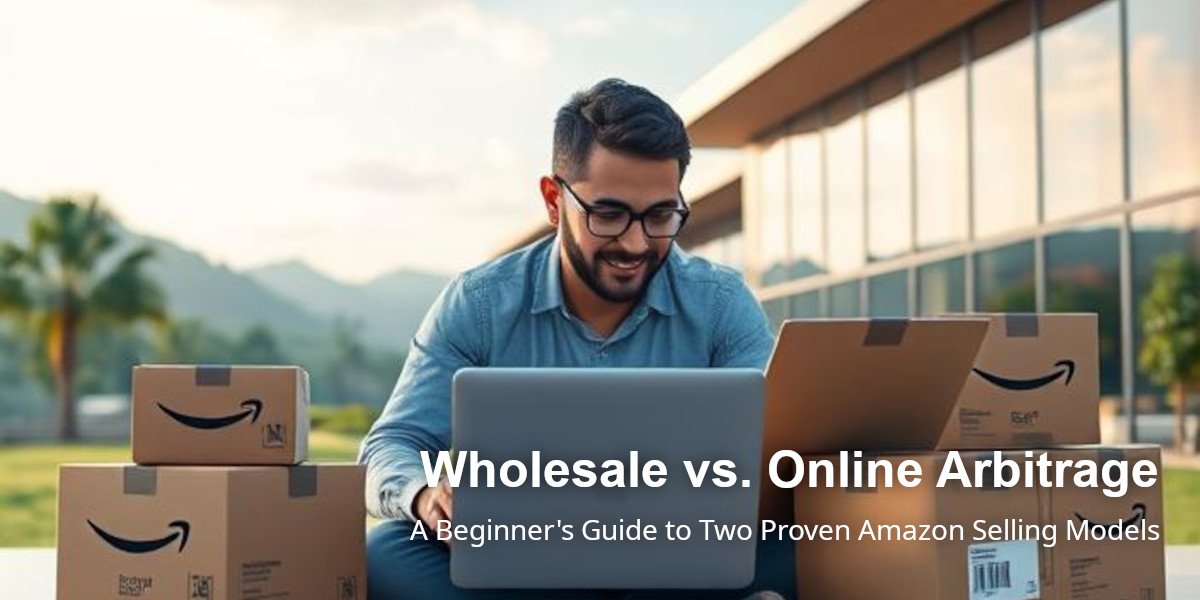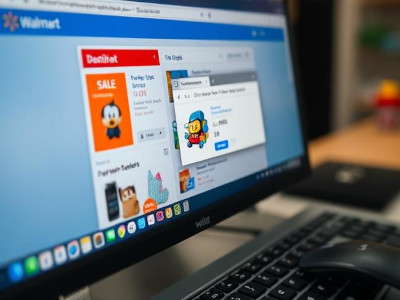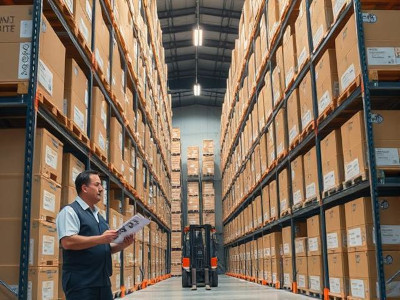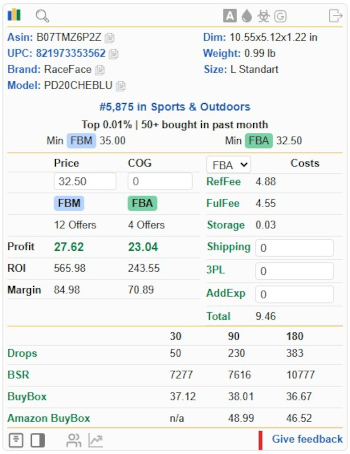Understanding Wholesale and Online Arbitrage

Are you new to Amazon selling and unsure whether to pursue wholesale or online arbitrage (OA)? This article will help you understand the differences, benefits, and risks of both models - so you can make the right choice for your business.

What is Online Arbitrage?
Online arbitrage is the process of buying products from online retailers at a discount and reselling them on Amazon for a profit. You’re essentially sourcing products from websites like Walmart, Target, or clearance sections and reselling them via your seller account.
- Low starting capital
- Easy to get started — no need for wholesale licenses
- Can be time-consuming to find deals manually
- Higher risk of price fluctuations and competition

What is Wholesale?
Wholesale involves purchasing large quantities of products directly from manufacturers or authorized distributors at discounted bulk prices. You then resell those items on Amazon, usually as a registered business.
- Higher scalability and better margins over time
- Consistent product supply from authorized sources
- Requires business registration and possible approval
- Higher minimum order quantities and upfront cost
Size of Operation & Startup Cost
One major difference between these two models is the cost to get started.
Online Arbitrage Example: You can begin with as little as $200–$500. This might allow you to test 10–20 units of various discounted products sourced from online retailers.
Wholesale Example: Starting in wholesale typically requires at least $1,000–$3,000 upfront to meet supplier minimum order quantities (MOQs) and invest in a single product in bulk. For example, buying 100 units at $15 each will cost you $1,500 before fees or prep.
How to Find Wholesale Suppliers
Finding reliable wholesale suppliers takes effort and research. Here are a few options:
- Use B2B directories like 4wholesaleusa.com, WholesaleCentral, or ThomasNet
- Attend trade shows (like ASD Market Week or local expos)
- Contact brand owners directly for distributor opportunities
Tip: Always verify suppliers and avoid platforms like Alibaba for U.S.-based wholesale unless you're sourcing private label.
Choosing the Right Product in Wholesale
When choosing a product to buy, wholesalers should be more cautious than arbitrage sellers. Since you're buying in bulk, your financial loss will be far more significant if you're not careful. If you aren't able to sell your product in the end, you'll be stuck with lots of inventory and a heavy financial loss.
To be successful as a wholesaler, it's important to choose a product that will sell well at a price that will net you a profit. Conduct your product research thoroughly before committing to an item. Make sure your products have relatively low competition compared to online arbitrage as well as a cheaper price point.
Key Differences at a Glance
While both strategies aim to profit by reselling products on Amazon, they differ in sourcing and scalability:

| Aspect | Online Arbitrage | Wholesale |
|---|---|---|
| Startup Cost | Low ($200 - $500) | High ($1,000 - $3,000+) |
| Sourcing | Online retail websites | Direct from suppliers/distributors |
| Product Supply | Unstable | Stable & Scalable |
| Effort per Product | High (manual sourcing) | Low (bulk restocking) |
| Time Investment | High for supplier relationships | High for product research |
| Profit Margins | Variable | Higher over time |
| Beginner | Easy to start | Requires business setup |
Which One Should You Choose?
If you're just starting with little capital and want to test the waters, online arbitrage may be the perfect first step. If you're aiming to scale fast and build a long-term brand, wholesale can offer more stability and control.
Many successful Amazon sellers start with OA, then transition into wholesale for higher profits and less manual sourcing.
Also consider this: your profit margins can vary depending on whether you're using Amazon FBA or fulfilling orders yourself with FBM. FBA may come with higher fees but offers convenience, Prime eligibility, and faster shipping, while FBM gives you more control and potentially lower fulfillment costs.
If you’re not familiar with these fulfillment methods, check out this beginner-friendly guide to FBA vs. FBM →
Pro Tip: Use Tools to Automate

No matter which model you choose, automation can be a game-changer.
Our Chrome extension SELLERAT helps you analyze products and make smarter sourcing decisions - all in one place.
With Sellerat, you can easily calculate your profit margins, view the number of sellers on a listing, and track price, Buy Box, and BSR (Best Sellers Rank) history to make informed decisions.